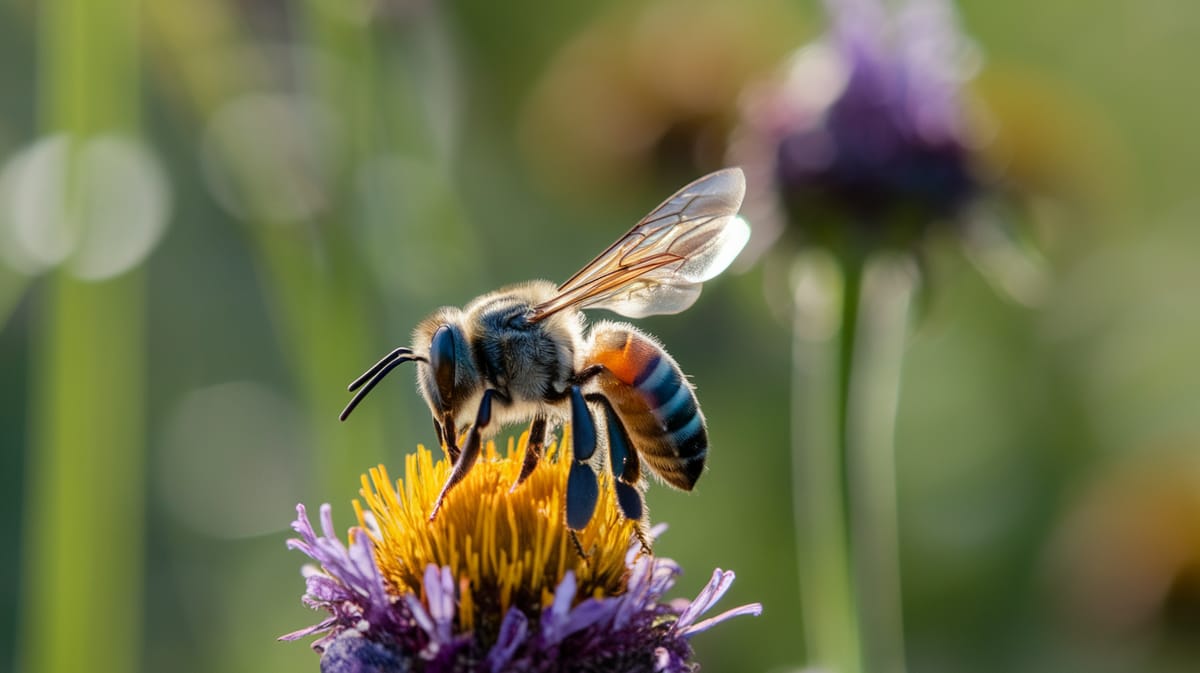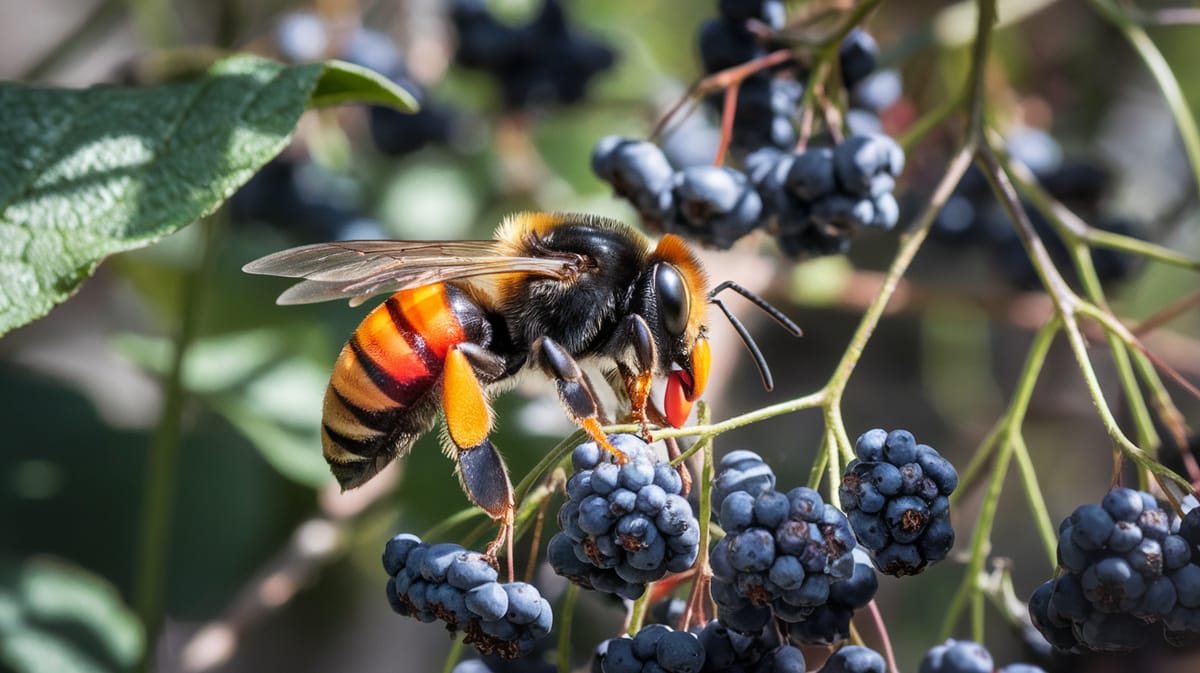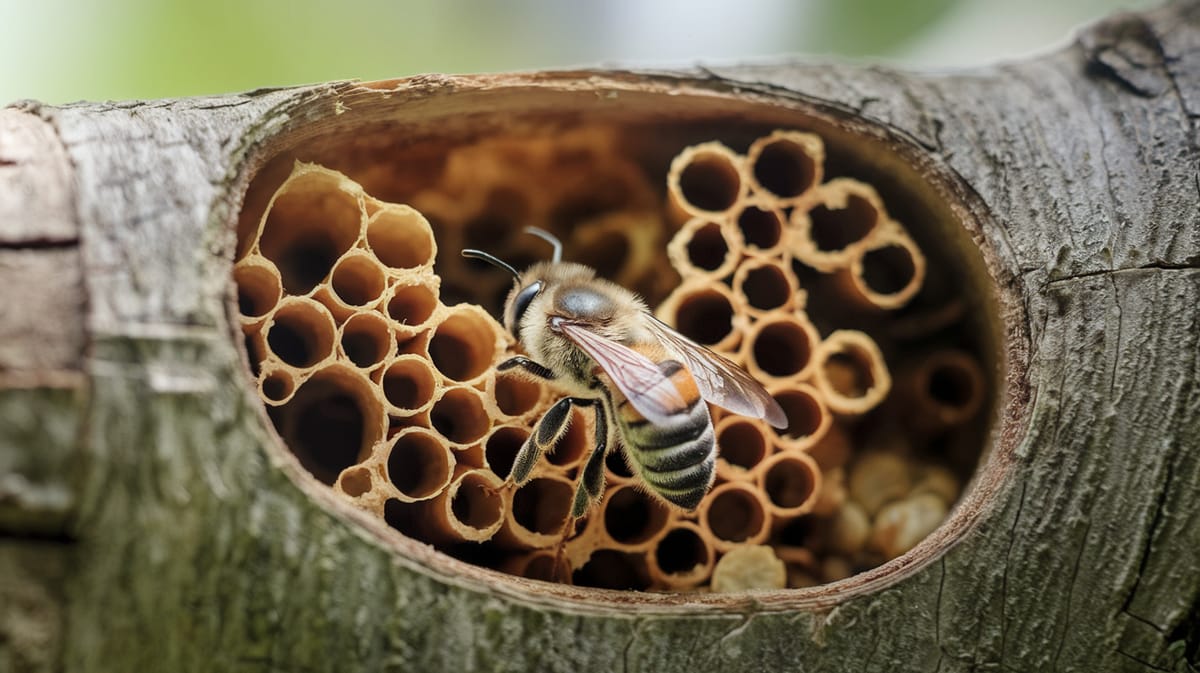Cuckoo Bee
Masters of mimicry and stealth, cuckoo bees secretly infiltrate host nests, laying their eggs for other bees to raise. Their parasitic nature plays a crucial role in maintaining ecological balance.

Key Insights at a Glance
Did You Know?
Taxonomy & Classification
Cuckoo bees are unique parasitic pollinators known for their brood parasitism, laying eggs in the nests of other bees, reflecting a fascinating evolutionary adaptation. Let's understand the evolutionary journey and classification of these remarkable parasites, pollinators.
Species Diversity
The genus Nomada includes over 850 identified species, showcasing extensive diversity across various ecosystems worldwide.
Evolutionary Strategy
Cuckoo bees adapted brood parasitism millions of years ago, thriving by exploiting host bees' nests for survival and reproduction.
Lifecycle and Growth
A remarkable journey of transformation from Egg to Adult.
Egg
Cuckoo bee eggs are laid in the nests of other bees, relying on host bees for incubation and protection.
Larva
Larvae consume host bee provisions, rapidly growing and eliminating competition by devouring the host's offspring.
Pupa
Pupation occurs within the host nest, where larvae metamorphose into adults, ready to emerge with mature features.
Adult
Adults mimic host species to infiltrate nests, focusing on reproduction and laying eggs in new host nests.
Dietary Habits
A parasitic forager, this insect relies on other bees’ nests for nourishment, often stealing pollen and nectar.
| DIET TYPE | DESCRIPTION |
|---|---|
| Primary Diet | Predominantly feeds on pollen and nectar collected by host bees, exploiting their hard work. |
| Secondary Diet | Occasionally consumes floral resources directly, though less frequently, as it primarily depends on host nests. |
| Occasional | Rarely gathers its own pollen or nectar, only when host resources are exceedingly scarce. |

Behaviour and Adaptations
Discover the fascinating strategies that enable the Cuckoo Bee to thrive in challenging environments.
Brood Parasitism
Lays eggs in other bees' nests, relying on hosts to rear their young.
Stealthy Infiltration
Sneaks into nests undetected to lay eggs.
Host Specificity
Targets specific bee species for parasitism, ensuring successful reproduction.
Ecosystem Impact
Ecosystem Impact: Cuckoo Bees play a crucial role in maintaining ecological balance through unique interactions and adaptations.
Pollinator Support
Cuckoo Bees indirectly aid pollination by supporting host bee populations.
Genetic Diversity Enhancer
By parasitizing multiple host species, they maintain genetic diversity in bee populations.
Nutrient Cycling Aid
Their activities contribute to nutrient cycling by influencing plant-pollinator dynamics.
Conservation Challenges
Addressing the major threats to Cuckoo Bee populations.
Habitat Loss
Urbanization and agriculture reduce nesting sites for Cuckoo Bees.
Pesticide Use
Chemical pesticides harm both Cuckoo Bees and their host species.
Climate Change
Altered weather patterns disrupt breeding and food availability.
Frequently Asked Questions
How long do Cuckoo Bee live?
Cuckoo bees typically live for about 4 to 6 weeks, depending on environmental conditions and availability of resources. Their lifecycle is closely tied to the host bees they parasitize, and their lifespan may vary slightly between species.
What do Cuckoo Bee eat?
Cuckoo bees do not collect pollen or nectar themselves. Instead, they rely on the pollen and nectar provisions collected by their host bees. Their larvae consume the food stored by the host bees for their own offspring.
Are Cuckoo Bee poisonous?
Cuckoo bees are not poisonous to humans. Like other bees, they can sting, but their sting is usually not dangerous unless there is an allergic reaction. They are primarily parasitic and pose little threat to humans.
Are Cuckoo Bee endangered?
Cuckoo bees are not generally classified as endangered, but the specific status can vary by species and region. Habitat loss and declining host bee populations can impact cuckoo bee populations, underscoring the importance of conservation efforts.
What do Cuckoo Bee symbolize?
Cuckoo bees often symbolize transformation and adaptability due to their unique parasitic lifestyle. In some cultures, they are associated with deception and cunning, as they lay eggs in the nests of other bees, relying on them for survival.
Do Cuckoo Bee bite?
Cuckoo bees do not bite humans. They can sting if provoked, but they are not aggressive and are more focused on finding host nests for laying their eggs. Their sting is similar to that of other bees.
What color are Cuckoo Bee?
Cuckoo bees vary in color but often have a mix of black, metallic blue, red, or yellow patterns. Their coloration can resemble that of their host species, aiding in their ability to infiltrate nests undetected.
Does a Cuckoo Bee have wings?
Yes, cuckoo bees have wings. Like other bees, they rely on their wings for flight, which is essential for finding host nests and foraging for food. Their wings are similar in structure to those of other bee species.
What does a Cuckoo Bee look like?
Cuckoo bees resemble their host bees but often lack pollen-carrying structures. They have a wasp-like appearance, with slender bodies and sometimes metallic colors. Their body shape and coloration help them mimic and infiltrate the nests of their host species.
Is a Cuckoo Bee an insect?
Yes, a cuckoo bee is an insect. It belongs to the Hymenoptera order, which includes bees, wasps, and ants. Cuckoo bees are a part of the Apidae family, known for their unique parasitic behavior involving other bee species.
Related Insects
Discover insects with similar characteristics to Cuckoo Bee - including shared habitats, diets, and taxonomic classifications
Share this profile
Help others discover Cuckoo Bee
